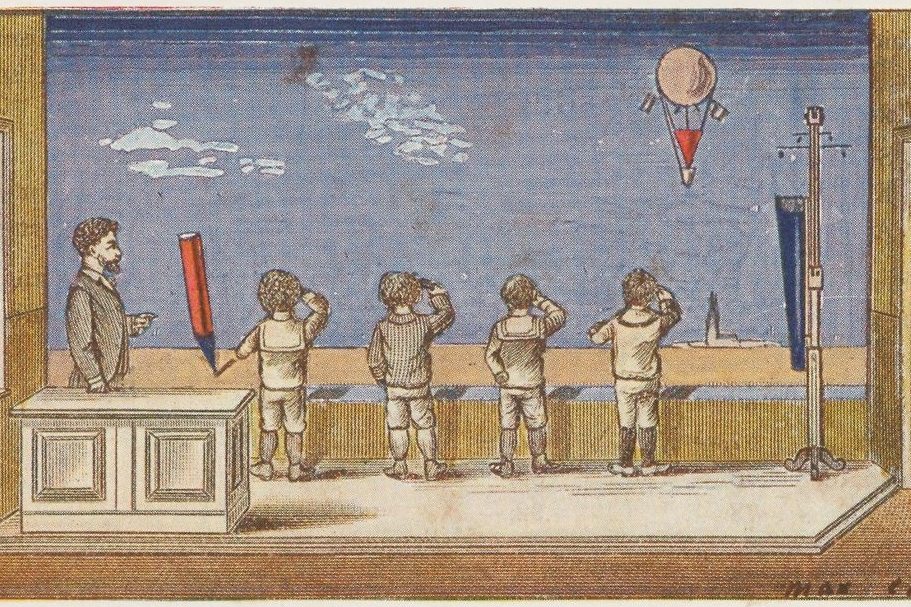In Art in America, Rachel Wetzler takes stock of surrealism a hundred years after its appearance on the art scene (the first use of the word that I am aware of was in Guillaume Apollinaire’s review of the 1917 performance of Parade (which was written by Jean Cocteau, scored by Erik Satie, and designed by Picasso). She notes its huge success in painting:
Critics and historians of modern art may have regarded Surrealism with suspicion but the public loved it: both MoMA shows drew significant crowds and traveled to multiple additional venues; that Rubin’s show was met by protesters — a mix of Yippies, Chicago Surrealists, and members of the anarchist art collective Black Mask — outraged at what they saw as the premature memorialization of a still-active movement only seemed to heighten its allure. In the popular imagination, Surrealism was stripped of its politics, understood instead as an art of outré hijinks embodied by the madcap figure of Dalí.
She’s right that its popularity was not because of its politics, which were largely Andre Breton’s and which most so-called surrealists found dull, but because of freedom. Anything was possible, surrealism seemed to say. This is how the American poet Frank O’Hara understood it. Yet, it was a freedom that was also narrow, since it was always the freedom to not make sense. This is fun for a while but gets old.
It is also worth noting that while surrealism was a success in painting, it was largely a failure in poetry and, to a lesser degree, in film. As I argued a few years ago in the New Criterion, this is because surrealism is an approach to making images, not to making art:
Unlike painting’s images, the poetic image is revealed linearly. One word is encountered after another. Objects take shape by addition. Characters appear. They do things with objects. Speakers speak. These elements must work together in a specific sequence to create, if everything goes right, a complex whole.
The painterly image, however, is revealed in an instant. We might roam the surface, focusing on a detail here, a texture or color there, and relate them back to the whole, but the sequence of that roaming and relating doesn’t change the image one bit. Change the sequence of words in a poem, and you have a new poem.
But surrealism doesn’t care about narratives. It cares about images. It is an image-making, metaphor-making technique — a way of bringing disparate things together to create a new, strange one. In fact, its disregard for narrative is one of its defining characteristics. It is a form of play, of imagistic exploration.
In other news
Speaking of freedom, its biggest threat is big tech, Susie Alegre argues in her new book. Steven Poole reviews: “The online world… harms our freedoms in many other ways, and is of a piece with the cruel history she sketches of phrenology, lobotomies and CIA mind-control experiments. It was recently reported that Nadine Dorries, the UK minister for culture wars, stormed into a meeting with Microsoft and demanded to know when they were going to get rid of ‘algorithms’: not really possible for a software company, since all computer programs are made of algorithms, but the story does reflect an increasing public suspicion of the ways machines are being used to manipulate us.”
The New Criterion has published an excerpt from a new translation of Jean Cocteau’s Letter to America: “New York isn’t a sitting city. It’s not a reclining city. New York is a standing city, and not because of the skyscrapers where numbers (which devour New York) established their anthill. I speak of a standing city because, if she sat down, she would repose and reflect, and because, if she lay down, she would sleep and dream. Since she wants neither to reflect nor to dream, she stands divided between the two breasts of her mother, one flowing with alcohol and the other with milk.”
Antony and Cleopatra at war:
The Battle of Actium, which involved more than 600 warships and at least 200,000 participants, was a flashpoint of Roman history, memorialized by Plutarch in his Life of Antony and by the third century Roman historian Cassius Dio. It was also the stuff of Shakespeare’s Antony and Cleopatra, numerous historical novels, and everyone’s favorite bad Hollywood movie, Cleopatra (1963), whose stars, Richard Burton and Elizabeth Taylor, reenacted the doomed lovers’ adulterous passion both on and off the set. But the details of the engagement itself, along with Antony’s plan of attack, remain hazy. The first century historian Livy wrote a detailed account that has unfortunately been lost, and the poets Horace, Virgil, and Sextus Propertius contributed highly unreliable impressionistic verses that flattered Octavian. In The War That Made the Roman Empire, Barry Strauss, a classics professor at Cornell University, tries to reconstruct exactly what happened on that fateful day in September.
Guidebooks are dead. Long live guidebooks: “Is it the end of the road for the guidebook? Since Mariana Starke wrote Information and Directions for Travellers on the Continent in 1820, with tips on the most ‘tolerable’ inns and how to hire a horse carriage, travelers have been packing a volume of advice alongside their identity documents before setting off for foreign terrain. But last week, one of the world’s most widely read guidebook publishers, Lonely Planet, changed course. It released the first half-dozen of thirty-five ‘Anti-guidebooks’, declaring that the guidebook is dead.”
When cowboys were progressives: “To the degree that progressives formed successful constituencies in the twentieth century — in economic, gender, racial and even foreign policy matters — the West was key. What I’ll further argue is that the Western ‘cowboy myth’ often lent support to progressive politics. Contrary to what many modern progressives imagine, the conservative monopoly on the cowboy myth is as much a commentary on the Democratic Party’s drift toward a ‘professional middle-class’ constituency as it is a commentary on Republican reaction.”
“If you have ever thought that there cannot be anything new to say or to learn about Queen Elizabeth II, you have not yet read Robert Hardman’s revelatory new biography of her in this, her astonishing Platinum Jubilee year.” William Shawcross reviews.


















